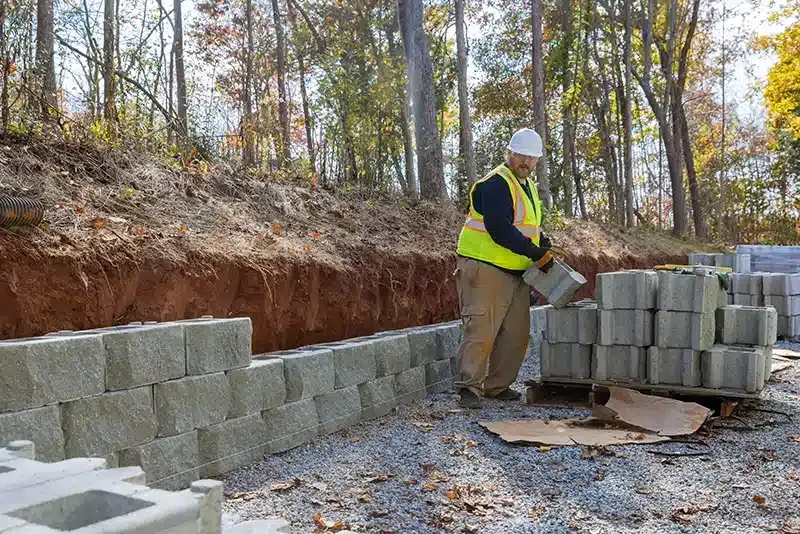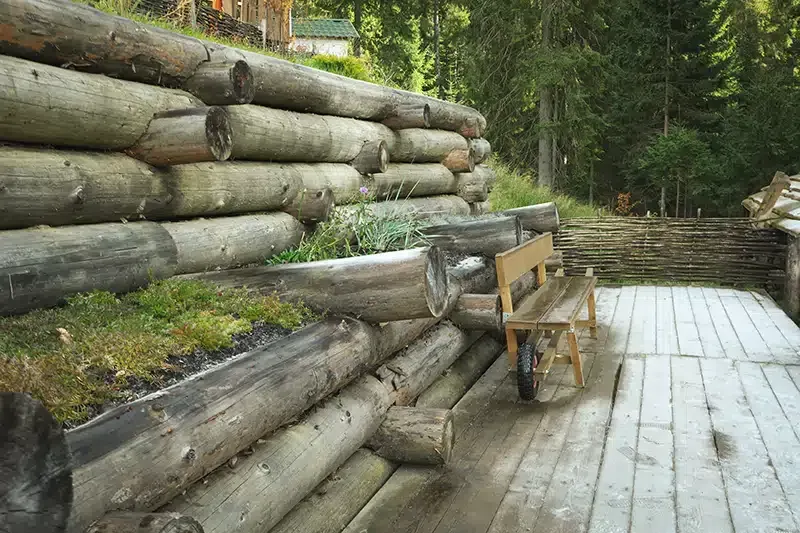Why Do Commercial Properties Fail Without Proper Retaining Walls?
Why Do Commercial Properties Fail Without Proper Retaining Walls?

Proper commercial retaining walls are essential for maintaining soil stability in commercial properties. Without them, you risk significant issues like erosion and compromised foundations.
These structural failures can lead to costly repairs and safety hazards that deter potential tenants. Understanding the implications of neglecting these structures is crucial.
What might seem like a minor oversight could threaten your investment in ways you hadn't anticipated. Let's explore the more profound consequences that could unfold.
The Role of Retaining Walls in Soil Stability
Retaining walls are essential components in preserving the structural integrity of commercial landscapes. They serve both functional and protective roles in maintaining soil stability.
How Retaining Walls Prevent Soil Erosion
Holding back soil on slopes or uneven terrain, retaining walls help prevent erosion and surface runoff from damaging your property.
- Reduce soil displacement during storms.
- Maintain landscape shape and grade.
- Protect against wind and water erosion.
Supporting Structural Integrity
A professional retaining wall contractor ensures walls create a solid foundation that resists lateral pressure from soil and water buildup, helping prevent costly damage.
- Stabilize sloped areas.
- Prevent ground shifting during heavy rainfall.
- Support adjacent structures and walkways.
Long-Term Benefits for Property Owners
Beyond function, retaining walls add value and longevity to your commercial space.
- Minimize future maintenance costs.
- Improve drainage efficiency.
- Enhance curb appeal and property value.
Investing in well-constructed retaining walls is an innovative, long-term strategy for protecting your commercial landscape.
Consequences of Neglecting Proper Drainage
Poor drainage poses serious risks to commercial properties' structural and visual integrity. Without proper water management, damage is inevitable.
Structural Damage from Water Accumulation
When water isn't directed away from buildings, it can compromise foundations and retaining walls.
- Causes soil erosion and ground instability.
- Leads to cracks in walls and shifting foundations.
- Weakens retaining walls over time.
Health and Safety Hazards
Stagnant water doesn’t just affect infrastructure—it can also threaten the well-being of property occupants.
- Promotes mold and mildew growth.
- Attracts mosquitoes and pests.
- Increases slip and fall hazards in walkways.
Financial and Aesthetic Impact
The long-term financial burden of ignoring drainage is often significant, and curb appeal takes a hit.
- Lowers property value and visual appeal.
- Increases repair and maintenance costs.
- Deters potential tenants or clients.
Addressing drainage early protects your investment and preserves your property's safety and appearance.
Financial Implications of Inadequate Retaining Structures
Neglecting to build or maintain proper retaining walls can create long-term financial setbacks for commercial property owners.
High Repair and Replacement Costs
Failing retaining walls often lead to extensive structural damage and urgent repair needs.
- Costly wall reconstruction and site restoration.
- Damage to adjacent buildings and infrastructure.
- Increased insurance claims and premiums.
Legal and Compliance Expenses
Improper structures may violate local codes and lead to legal conflicts.
- Fines for non-compliance with building regulations.
- Liability issues in tenant or neighbor disputes.
- Legal fees from claims or lawsuits.
Loss of Property Value and Income
Unstable properties are less appealing to investors, tenants, or buyers.
- Declining resale and appraisal value.
Lost rental income during downtime. - Project delays and higher development costs.
Investing in durable retaining structures is not just a construction decision—it's a financial safeguard. Poorly built walls can drain your resources through repairs, legal battles, and lost income.
Protecting your property from structural failures ensures long-term stability. Ultimately, proper planning today saves significant costs tomorrow.


